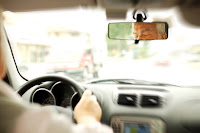Dangers of Drowsy Driving and Sleep Depravation

Did you have an early start today? Or was it a late night? Have you been pushing yourself to focus through the day? If you are sleepy, tired and physically worn-out, you know that you are not mentally on top of your game. Sleep depravation is cumulative, so the less sleep you have over time, the more it adds up against your body and its ability to function. When you feel like this, you probably avoid engaging in any challenging or complex activities, choosing to focus on normal routine tasks.
How much of an issue is sleep depravation? The National Institute on Health estimates that in United States approximately 70 million people have a sleep problem and of those 40-50 million suffer from a chronic sleep disorder. In addition, stress, anxiety and depression cause intermittent sleep-related problem for 20-30 million people. For teens and college students, the need for consistent sleep as their bodies change increases to 8.5-9.5 hours of sleep per night. Add the increase in the physical need of sleep with the increase of class workload, after-school activities and busy social lives and the risk of sleep depravation for these two groups increase. The National Highway Traffic Safety Administration (NHTSA) attributes drowsy driving as the cause of more than 100,000 crashes a year, resulting in 40,000 injuries and 1,550 deaths. NHSTA cautions that the figures are most likely much greater due to being under reported and not including incidents caused by driver inattention.
How does not getting enough sleep affect a routine task like driving? Too many times we take driving for granted as a auto pilot event. But driving is never really a routine activity. Each time we start the ignition, we are going to encounter a different set of circumstances behind the wheel than we did the day before based on how we feel physically, mentally and emotionally, the weather, the conditions of the roadway and vehicle, the other drivers traveling, pedestrians we may encounter and distractions that may be present. Sometimes these changes are subtle and at times more apparent. Driving is a complex task that requires constant focus and attention to changing stimuli.
When you are physically or mentally tired how does it impact your ability to drive safely? A drowsy driver can:
- Be slower to recognize and respond to situations.
- Have difficulty in processing information and noticing subtle changes.
- Experience less than a second sleep episode called micro-sleeps without noticing.
- Become more agitated and moody in their driving behavior.
- Experience impaired judgment and vision.
Some drivers drift in their lanes, miss an exit they planned to take, drive significantly slower than the speed limit, brake suddenly or fail to slow down in advance for stop signs and signals.
Who is at the greatest risk while driving? According to the National Sleep Foundation the following groups are especially at risk:
- Young drivers – Combining inexperience with sleepiness and a tendency to drive at night puts young teen drivers at risk, especially males aged 16-25 years.
- Shift workers and people working long hours – People who work night shifts, rotating shifts, double shifts or work more than one job have a six-fold increase in drowsy driving crashes.
- Commercial drivers – Those who drive a high number of miles and drive at night are at significantly higher risk for fall-asleep crashes. Commercial drivers have also been found to be at a high risk for sleep disorders.
- People with untreated sleep disorders such as obstructive sleep apnea (OSA) –People with untreated OSA are up to seven times more likely to have a drowsy driving crash. For some people insomnia can increase fatigue.
- Business travelers – Frequent travelers who may be suffering from jet lag and crossing time zones, spending long hours behind the wheel or getting too little sleep.
Sleep is important for normal functioning. Everyone needs to be rested and alert as they go about their day. With the time change, colder weather and the upcoming holidays, avoiding drowsy driving may take more effort. Remember to get at least seven hours sleep consistently, plan to drive when you are normally awake, enlist the help of passengers to stay awake and alert and take frequent breaks to refresh on long drives.
Driving is a complex task, and requires our full attention.
More Tips to help Avoid Drowsy Driving
Labels: dangers of drowsy driving, drowsy driving, prevent drowsy driving
at
10:39 AM
![]()




0 Comments:
Post a Comment
Subscribe to Post Comments [Atom]
<< Home